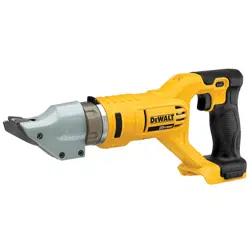Loading ...
Loading ...
Loading ...

ENGLISH
3
into account the working conditions and the
work to be performed. Use of the power tool for
operations different from those intended could result
in a hazardoussituation.
5) Battery Tool Use and Care
a ) Recharge only with the charger specified by the
manufacturer. A charger that is suitable for one type
of battery pack may create a risk of fire when used
with another batterypack.
b ) Use power tools only with specifically designated
battery packs. Use of any other battery packs may
create a risk of injury andfire.
c ) When battery pack is not in use, keep it away
from other metal objects, like paper clips, coins,
keys, nails, screws, or other small metal objects,
that can make a connection from one terminal to
another. Shorting the battery terminals together may
cause burns or afire.
d ) Under abusive conditions, liquid may be ejected
from the battery; avoid contact. If contact
accidentally occurs, flush with water. If liquid
contacts eyes, additionally seek medical help. Liquid
ejected from the battery may cause irritation orburns.
6) Service
a ) Have your power tool serviced by a qualified
repair person using only identical replacement
parts. This will ensure that the safety of the power
tool ismaintained.
Additional Specific Safety Instructions for
Shears
• Hold power tool by insulated gripping surfaces,
when performing an operation where the cutting
accessory may contact hidden wiring. Cutting
accessory contacting a “live” wire may make exposed
metal parts of the power tool “live” and could give the
operator an electric shock.
• Cut material at or below rated capacity. Remember,
material thickness increases as gauge number
deceases (14 gauge is thicker than 16 gauge). 14
gauge thickness is .075" (1.9 mm); 16 gauge is .060"
(1.5 mm).
• NEVER have any part of your body near the blades.
Serious personal injury may result.
• Keep hands away from cutting area. A moment of
inattention while operating power tools may result in
serious personal injury.
• ALWAYS wear gloves when handling sheet metal. The
edges are sharp and can cause serious personal injury.
• Firmly secure the piece of metal to be cut to prevent
movement during cutting.
• ALWAYS start tool before engaging material to be
cut.
• ALWAYS use tool with curl deflector.
• If possible, cut material so scrap curl is to the right.
This direction will move curl down and out of the way.
• Use shears upright. If tool is upside down, metal curl
may turn toward you.
• DO NOT use the shear with any kind of accessory or
attachment.
• Always wear safety shoes to protect your feet from
sharp metal debris on the floor.
• Keep all screws tight. Check periodically for loosening.
• Do not place anything into the motor housing openings.
• Clean out your tool often, especially after heavy use.
Dust and grit containing metal particles often accumulate
on interior surfaces and could create an electric shock
hazard.
• Stay clear of end pieces that may fall after being cut
off. Contact with a sharp edge could result in personal
injury.
Additional Safety Information
WARNING: ALWAYS use safety glasses. Everyday
eyeglasses are NOT safety glasses. Also use face or
dust mask if cutting operation is dusty. ALWAYS WEAR
CERTIFIED SAFETYEQUIPMENT:
• ANSI Z87.1 eye protection (CAN/CSA Z94.3),
• ANSI S12.6 (S3.19) hearing protection,
• NIOSH/OSHA/MSHA respiratoryprotection.
WARNING: Some dust created by power sanding,
sawing, grinding, drilling, and other construction
activities contains chemicals known to the State
of California to cause cancer, birth defects or
other reproductive harm. Some examples of these
chemicalsare:
• lead from lead-based paints,
• crystalline silica from bricks and cement and other
masonry products, and
• arsenic and chromium from chemically-
treatedlumber.
Your risk from these exposures varies, depending on how
often you do this type of work. To reduce your exposure to
these chemicals: work in a well ventilated area, and work with
approved safety equipment, such as those dust masks that are
specially designed to filter out microscopicparticles.
• Avoid prolonged contact with dust from power
sanding, sawing, grinding, drilling, and other
construction activities. Wear protective clothing and
wash exposed areas with soap and water. Allowing
dust to get into your mouth, eyes, or lay on the skin may
promote absorption of harmfulchemicals.
WARNING: Use of this tool can generate and/
or disperse dust, which may cause serious and
permanent respiratory or other injury. Always use
NIOSH/OSHA approved respiratory protection
appropriate for the dust exposure. Direct particles
away from face andbody.
WARNING: Always wear proper personal hearing
protection that conforms to ANSI S12.6 (S3.19)
during use. Under some conditions and duration
of use, noise from this product may contribute to
hearingloss.
Loading ...
Loading ...
Loading ...
